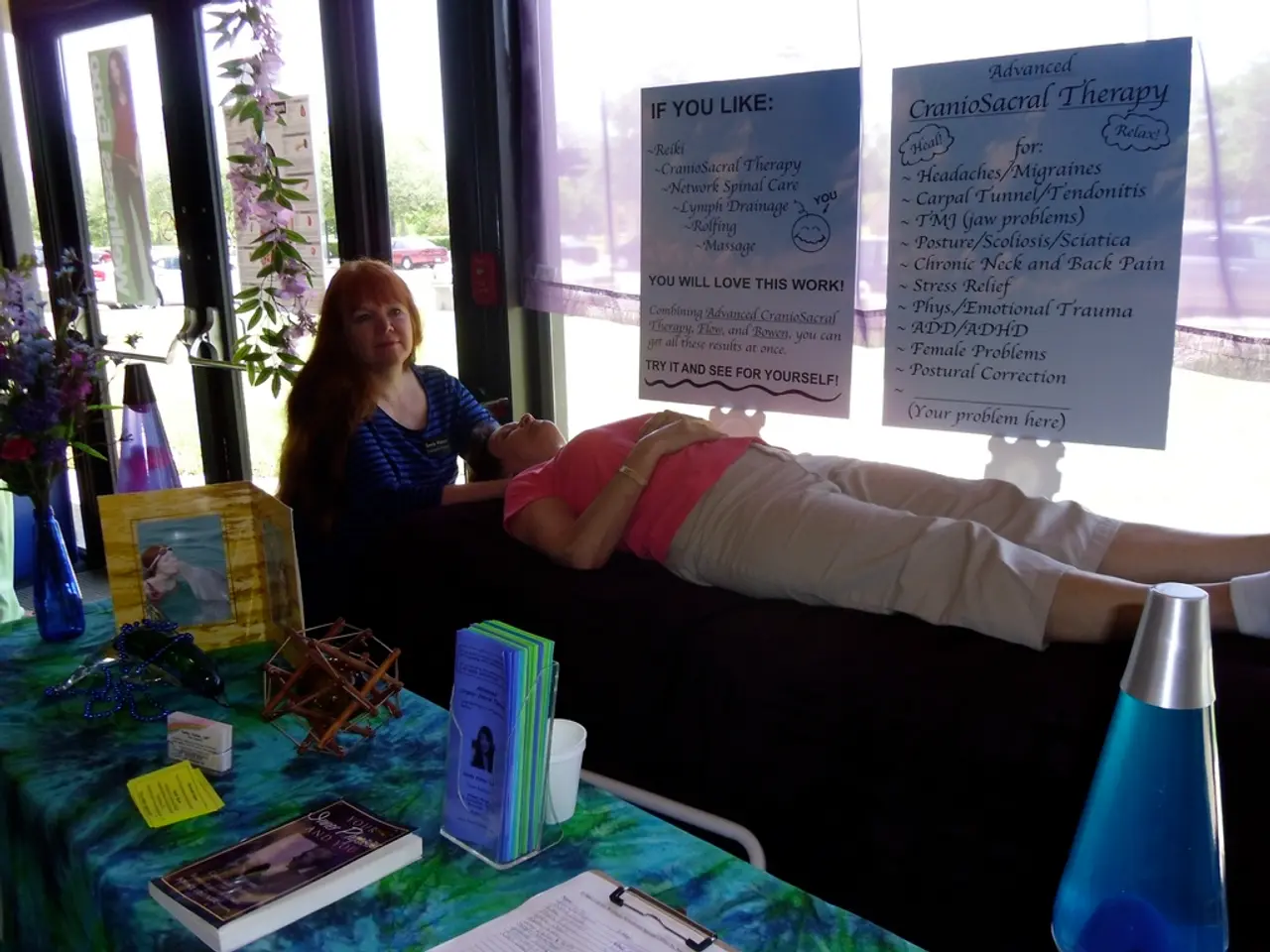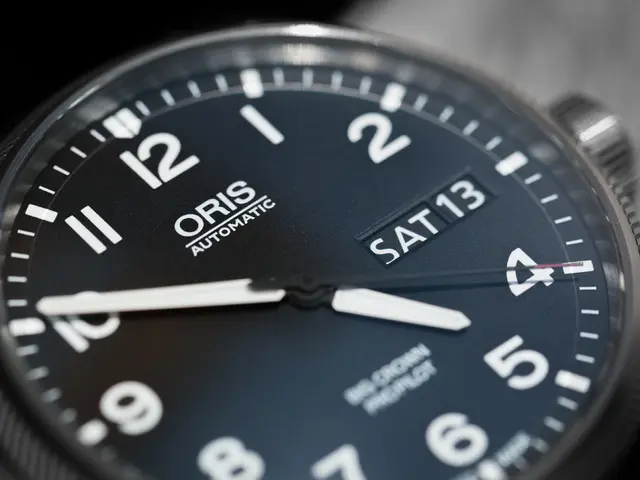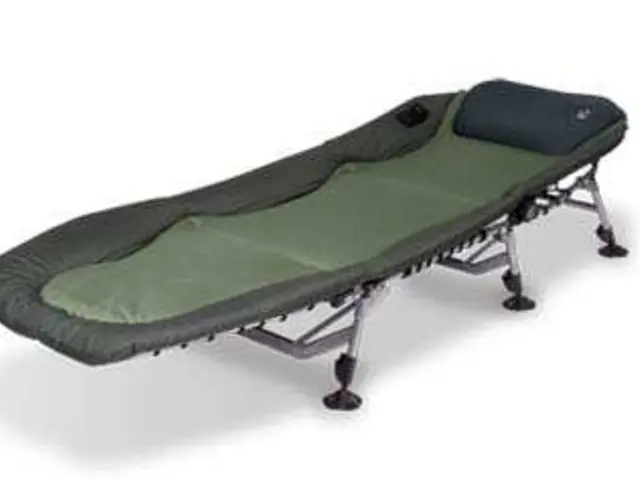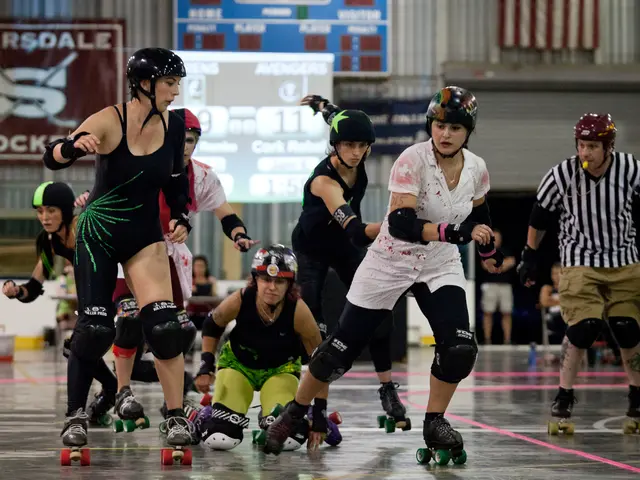Physical Exercise as a Remedy: Fitness Routines for Managing Anxiety and Depression
Exercise can be a potent and accessible strategy for alleviating symptoms of anxiety and depression. This is because physical activity stimulates the production of neurotransmitters like serotonin and dopamine, which regulate mood and overall feelings of happiness [1].
Yoga, a mindful movement practice, is often recommended for people struggling with anxiety and depression due to its ability to calm the mind and reduce tension. By combining deep breathing with mindful movement, yoga promotes relaxation and helps to calm the nervous system [1]. Yoga can be a gentle introduction to exercise for newcomers, and as comfort and confidence grow, the intensity can be gradually increased.
Tai chi, another mindful movement practice, promotes a sense of calm and centeredness. Like yoga, tai chi can provide calmness and clarity, helping to quiet the mind and ease the body into a state of relaxation [1].
Different types of workouts have varying effectiveness for anxiety and depression. Low-intensity resistance exercises, such as light weights or gentle circuits, have been shown to improve anxiety symptoms, especially in children and teens [2]. Even brief aerobic exercise (5-10 minutes) can start producing anti-anxiety effects in adults [1].
Moderate-intensity, mixed-mode workouts (aerobic and resistance training) are particularly effective in reducing depression in children and adolescents, with programs under three months showing significant benefits [2]. Regular aerobic exercise in adults also reduces the risk of depression by 25% [1].
Vigorous aerobic exercise and leisure-time physical activity are associated with better mood, energy, concentration, and lower rates of anxiety and depression, though individual response may vary due to context [1][3].
A brisk 10-minute walk or simple physical activities can provide several hours of relief from depressed mood and anxiety [1]. The mental health benefits of exercise hold true across ages, but have been particularly studied in children, teens, and adults. Psychological and social factors, such as enjoyment, achievement, and social support, during exercise may moderate its impact on mental health [3].
Engaging in physical activity releases endorphins, which are natural chemicals that help lift mood. Exercise can also reduce the levels of cortisol, the stress hormone that plays a central role in anxiety [1].
Walking, particularly in nature, is one of the most effective and low-impact ways to relieve stress and anxiety. This form of exercise offers an opportunity for mindful thinking, helping to ground you in the present moment and reduce racing thoughts [1].
Ideally, aim for 30 minutes of exercise most days of the week for mental health benefits. Strength training, which increases the production of neurotransmitters like serotonin and dopamine, can help fight off feelings of sadness or hopelessness [1]. Aerobic exercises such as running, cycling, and swimming are great for managing anxiety because they help reduce stress hormones and release endorphins [1].
Exercise should be part of a broader strategy for managing anxiety and depression, including therapy, meditation, a healthy diet, and social support. Consistency is key in reaping the benefits of movement as therapy [1].
In summary, regular aerobic and resistance exercise tailored to one’s preferences and intensity tolerance can be a powerful, accessible strategy to alleviate anxiety and depression. Low-intensity resistance training may be best for anxiety, while moderate mixed-intensity workouts benefit depression most, especially when sustained for several weeks [1][2][4]. Aim to incorporate movement into your daily routine, even if it's just 20-30 minutes a day, and reap the benefits for your mental health.
[1] Mayo Clinic. (2021). Exercise for Mood and Anxiety. [online] Available at: https://www.mayoclinic.org/diseases-conditions/depression/in-depth/exercise/art-20046175
[2] National Institute of Mental Health. (2021). Physical Activity and Mental Health. [online] Available at: https://www.nimh.nih.gov/health/topics/physical-activity-and-mental-health/index.shtml
[3] Anxiety and Depression Association of America. (2021). Physical Activity and Mental Health. [online] Available at: https://adaa.org/about-adaa/press-room/facts-statistics
[4] American Psychological Association. (2021). Exercise for Mental Health. [online] Available at: https://www.apa.org/topics/exercise-mental-health
Exercise, such as yoga, tai chi, and various workouts, can alleviate symptoms of anxiety and depression due to the production of mood-regulating neurotransmitters like serotonin and dopamine. Yoga, a mindful movement practice, calms the mind and reduces tension, and can be a gentle introduction to exercise. Tai chi, another mindful practice, promotes calmness and clarity.
Low-intensity resistance exercises and brief aerobic exercise can improve anxiety symptoms, while moderate-intensity mixed-mode workouts are particularly effective in reducing depression, especially in children and adolescents. Regular aerobic exercise in adults reduces the risk of depression by 25%. Vigorous aerobic exercise, leisure-time physical activity, and simple activities can provide relief from depressed mood and anxiety.
Engaging in physical activity releases endorphins, reduces cortisol levels, and offers an opportunity for mindful thinking, particularly when walking in nature. Ideally, aim for 30 minutes of exercise most days of the week for mental health benefits. Strength training and aerobic exercises like running, cycling, and swimming are great for managing anxiety because they help reduce stress hormones and release endorphins.
Exercise should be part of a broader strategy for managing anxiety and depression, including therapy, meditation, a healthy diet, and social support. Consistency is key in reaping the benefits of movement as therapy. Regular aerobic and resistance exercise tailored to individual preferences and intensity tolerance can be a powerful strategy to alleviate anxiety and depression.




